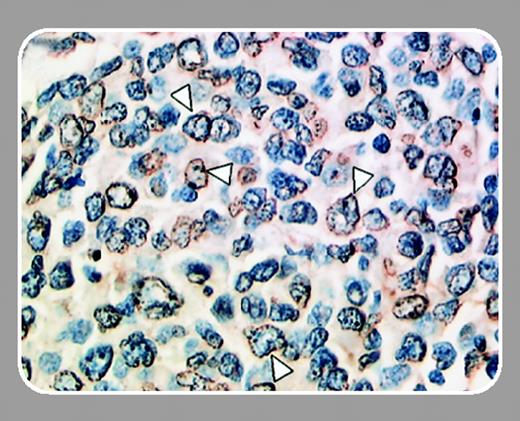The low-grade lymphomas are characterized by low rates of cell proliferation with alterations in the regulation of apoptosis. In follicular lymphoma, there are near invariable high levels of expression of B-cell leukemia/lymphoma-2 (BCL-2), in most cases as a result of dysregulation of the bcl-2 gene in the t(14;18), which occurs in the majority of cases. Despite high levels of expression of this antiapoptotic protein, the cells are paradoxically characterized, initially by a good response to chemotherapy, and the typical clinical course is one of relentlessly relapsing disease, acquisition of resistance to chemotherapy, and subsequent death from progression of disease. BCL-2 has given its name to a whole family of apoptosis regulatory molecules, including the antiapoptotic proteins BCL-2, the long isoform of BCL-x (BCL-xL), myeloid cell leukemia sequence 1 (MCL-1), and proapoptotic proteins including BCL-2–associated X (BAX), BCL-2 homologous antagonist/killer (BAK), the short isoform of BCL-x (BCL-xS), BH3 interacting domain death agonist (BID), and BCL-2–interacting killer (apoptosis inducing) (BIK). Control of apoptosis is complex in physiologic as well as in pathologic conditions, and, among other factors, it is the balance of such proapoptotic and antiapoptotic signals that control cell death or survival. In addition to increased levels of expression of BCL-2, BCL-xL is also expressed. In follicular lymphoma,1 it has been previously shown that there is a relationship between BCL-xL expression and apoptosis in follicular lymphoma cells, even when BCL-2 expression is maintained, suggesting that BCL-xL plays a key function in follicular lymphoma.2
In this issue of Blood, Zhao and colleagues (page 695) report further on the significance of expression of BCL-xL in follicular lymphoma. Levels of BCL-xL RNA were increased in lymph nodes from patients with follicular lymphoma compared with reactive hyperplastic lymph nodes. Using laser microdissection, Zhao et al eloquently show that the high levels of expression of BCL-xL are in the follicular lymphoma cells and not in the tumor microenvironment, and they also demonstrate an inverse correlation between BCL-xL expression and the number of lymphoma cells undergoing apoptosis. The particularly novel finding here is that high levels of expression of BCL-xL and the number of lymphoma cells undergoing apoptosis have prognostic significance.
There has been increasing interest in designing therapies that target the apoptotic pathways. These are attractive intracellular targets to induce tumor cell death, sensitize tumor cells to death induced by chemotherapy, and prevent the development of chemotherapy resistance. The use of anti-sense oligonucleotides (G3139 or Gena-sense) targeting the first 6 codons of bcl-2 mRNA is showing promise in clinical studies. Other approaches include the use of peptides mimicking the BH3 domain of BCL-2–related proteins or nonpeptidic BH3 mimetics. Therapies targeting BCL-xl might be of particular interest for patients with follicular lymphoma and based on the findings reported here might be expected to have significant impact on patients with high-risk disease, who would require such therapy most.



